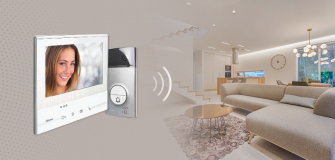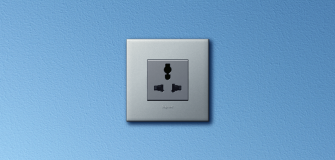How AI & IoT Are Transforming Smart Homes
AI-powered and IoT-enabled smart applications such as personalised and predictive automation have enhanced user experience and added value to smart homes by making life more secure, comfortable, convenient and safe.
In recent years, AI and IoT have become leading factors in the growth of smart home devices and automation. Smart living with AI and integrated IoT is no longer considered a luxury as home automation tools have become more affordable.
Household appliances can now make intelligent and relevant recommendations on a variety of things, related to shopping lists, event attendance, recipes, hotel booking, clothes to wash and outfits to wear.
This allows devices to obtain a new level of intelligence that assists humans to better manage their daily tasks at home from anywhere in the world!
But before we go ahead, what exactly is AI & IoT? And how are these technologies changing the future? Let’s have a look:
What is AI?

According to Britannica, the term Artificial Intelligence (AI) means the ability of a digital computer or computer-controlled robot to perform tasks commonly associated with intelligent beings.
This implies a capacity that can play out specific errands for users, automatically. The ability to perform these tasks is reliant on information gathered or gained from the framework, which utilises an assortment of machine learning or deep learning algorithms.
Thus, AI can think logically without emotions and make rational decisions with close to no mistakes. It needs no rest and works round the clock, 24×7.
What is IoT?

The Internet of Things (IoT) describes the network of physical objects “things” embedded with sensors, software, and other technologies to connect and exchange data with other devices and systems over the internet. These devices range from ordinary household objects to advanced industrial tools.
IoT enables devices/objects to observe, identify and understand a situation or the surroundings without being dependent on human help. From everyday items such as kitchen appliances, switches, smart thermostats, driving cars, baby monitors to the internet via embedded devices, everything is connected.
The Power of Integrating AI and IoT

When it comes to smart homes, the IoT framework passes on crucial information to AI. AI then gains insight from this data and performs specific undertakings to reduce the need for human contact.
Thus, it converts raw data received from the IoT connected smart device into a behaviour pattern relevant to the daily life of each user. As time passes, appliances integrated with AI learn user routines and predict experiences based on this information.
Once AI and the IoT are integrated seamlessly, smart devices can remotely respond to a user’s voice commands or pre-programmed AI commands. Today, many industry players such as Apple, Google & Amazon are focusing on creating smart assistants or AI’s for home automation.
Listed below are some real-life examples of how strong AI & IoT are transforming smart homes as we know it:
- AI can be used to unlock doors and determine regular access patterns of different users, providing insight and potentially detecting suspicious activity.
- When homeowners aren’t home, AI and IoT connected devices automatically switch off fans, lights and lock doors, thus ensuring energy efficiency and additional security.
- Various devices & systems, including light bulbs, refrigerators, ACs, ovens, water supply, electric supply, and security systems, act like smart devices when connected with IoT applications. Here, AI serves as a data gathering, analysis, and decision-making system to function automatically.
- Smart ovens or stoves, with the help of AI systems, can assess the temperature of the food being cooked and bring it down automatically, thus preventing significant mishaps. This technology also has the option to inform users when food is ready to be removed from the oven or stove.
- AI also learns and envisions user necessities. For instance, a smart kitchen could preheat and set up ita appliances to ensure the cooking process goes smoothly; even before the user returns home.
- The potential offered by IoT & AI isn’t just limited to new homes. Switches are being converted into smart switches, and ACs can be adjusted to allow remote access through smart apps or AI dependent on cloud servers.
At Legrand, we’re all about providing cost-effective IoT solutions. Through the Eliot program, we have developed a multitude of connected solutions that add value for users. We aim to connect existing products by adding corresponding interfaces and create new solutions that are connected natively, i.e. inherently designed to communicate in residential environments.
The Future of Smart Homes

Both IoT and AI are powerful tools capable of making homes smarter. These technologies are an ideal mix for intelligent houses, thereby saving time and improving efficiency. In this day and age, smart homes not only cater to the tech-savvy but are also ideal for individuals searching for cost efficiency, energy-saving and a greater degree of security.
IoT and AI are doing wonders for the smart home automation market, and the best is yet to come! As technology continues changing, smart home possibilities are endless.
Live the Advantage and Experience the next level of high-tech living with Legrand: Modular Switches | Home Automation | Video Door Phone | IoT Devices




















